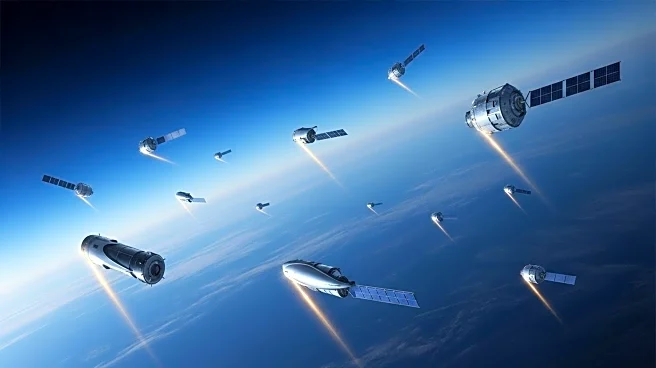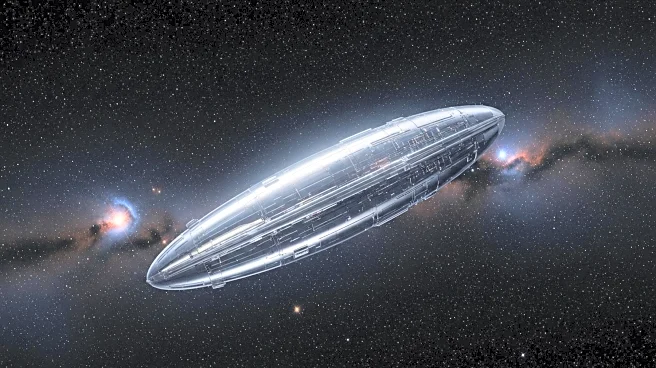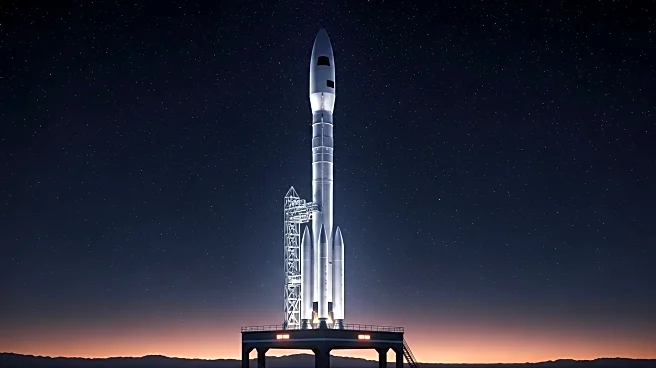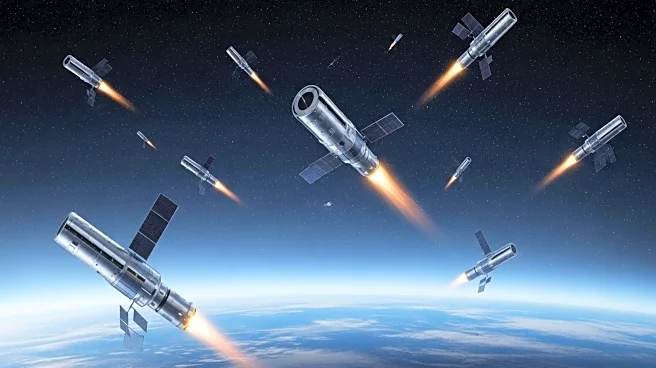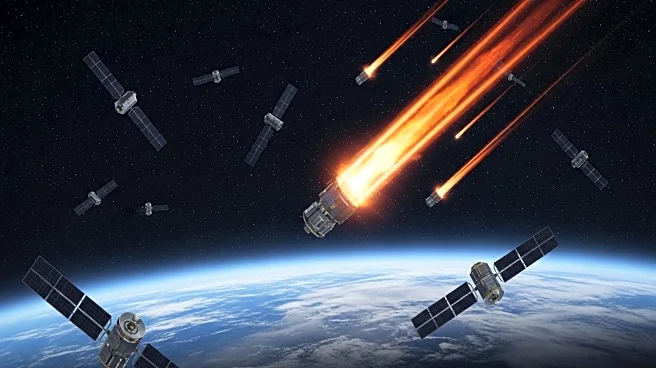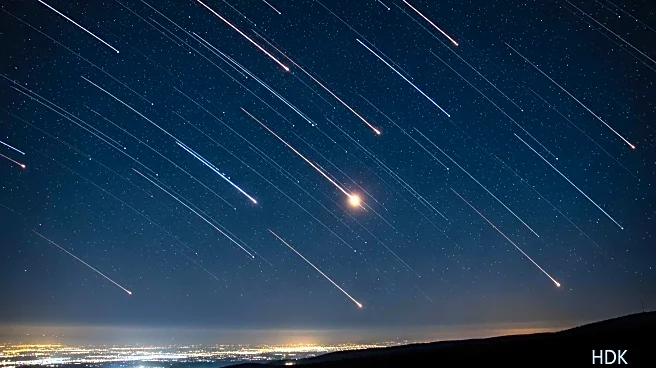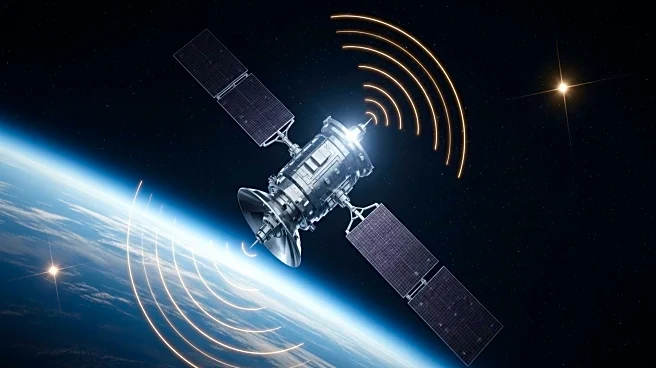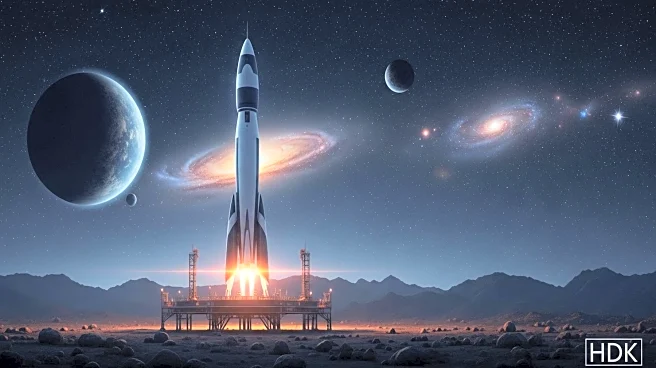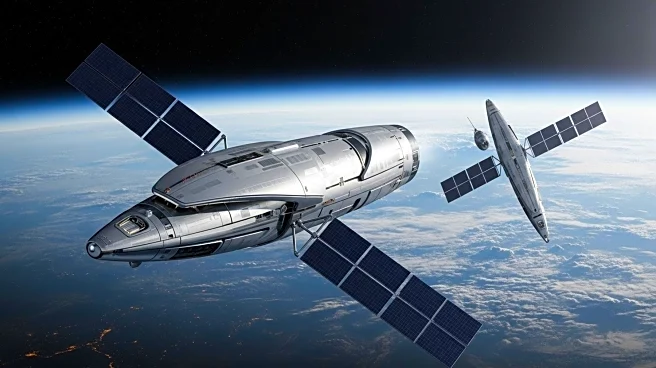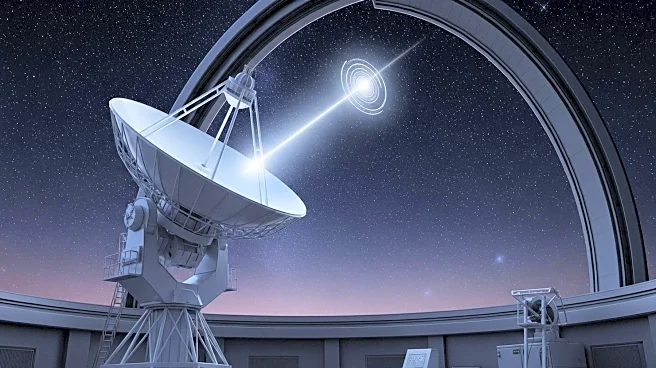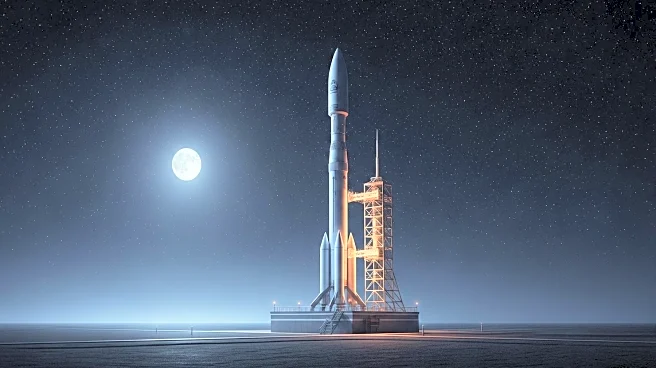What is the story about?
What's Happening?
Currently, one to two Starlink satellites are reentering Earth's atmosphere each day, according to retired Harvard astrophysicist Jonathan McDowell. These satellites, part of SpaceX's Starlink project, are burning up upon reentry, creating visible streaks in the sky. With over 8,000 Starlink satellites in orbit and more being launched, the frequency of these reentries is expected to increase. The phenomenon is part of a broader trend of increasing satellite deployments by various companies and countries, which could lead to more frequent reentries and potential space debris issues.
Why It's Important?
The increasing number of satellite reentries raises concerns about space debris and its potential impact on Earth's atmosphere. The presence of exotic metals from vaporized satellites could affect atmospheric chemistry, including the ozone layer. Additionally, the growing number of satellites increases the risk of collisions, potentially leading to the Kessler syndrome, where space debris collisions create a cascade effect. This situation underscores the need for international cooperation and regulation to manage satellite deployments and mitigate the risks associated with space debris.
What's Next?
As the number of satellite reentries is expected to rise, there is a pressing need for strategies to manage space debris and its environmental impact. Stakeholders, including governments and space agencies, may need to develop policies to regulate satellite launches and ensure safe reentry procedures. Research into the atmospheric effects of satellite debris will be crucial in understanding and mitigating potential environmental impacts. The situation calls for increased monitoring and international collaboration to address the challenges posed by the growing number of satellites in orbit.
Beyond the Headlines
The issue of satellite reentries highlights the broader implications of increased space activity, including the ethical and environmental responsibilities of space-faring entities. The potential for space debris to affect Earth's atmosphere and climate adds a new dimension to the conversation about sustainable space exploration. As space becomes more accessible, the need for responsible practices and policies becomes increasingly important to ensure the long-term viability of space activities.
AI Generated Content
Do you find this article useful?
